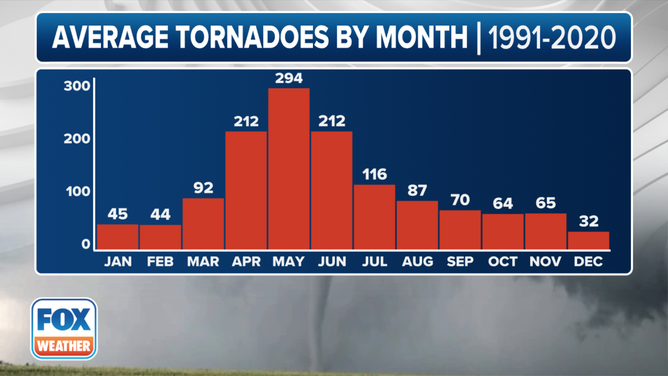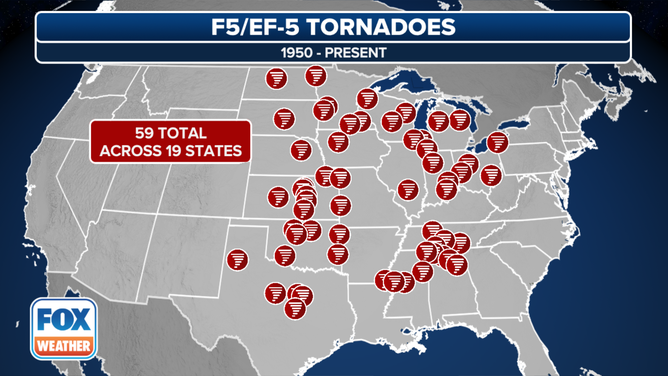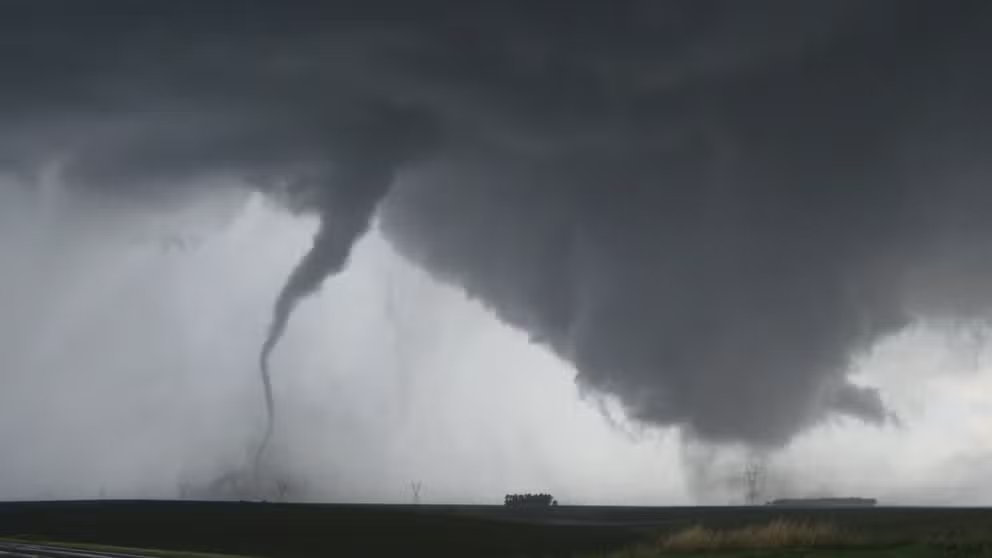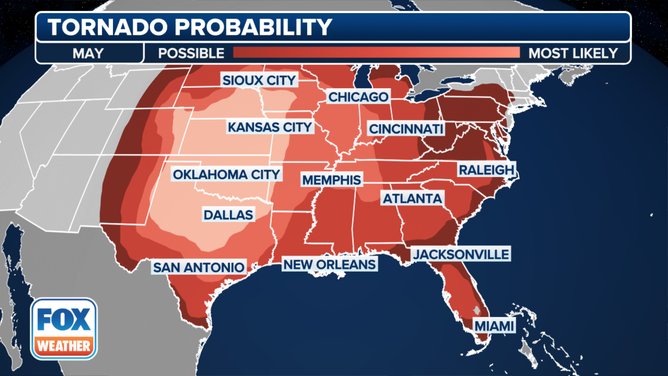April kicks off America's most active time of year for tornadoes
April, May and June are the three most active months for tornadoes in the U.S., comprising more than half of the annual average of 1,333 twisters.
Why spring is America's most active time of year for tornadoes
Tornadoes can happen any time of year, but the spring is when they reach their peak.
Tornadoes can occur in the U.S. at any time throughout the year, but there’s a distinct seasonal peak in tornadic activity, and it starts in April.
Long-term severe weather records show April, May and June are the three most active months for tornadoes in the U.S.
Between 1991 and 2020, an average of 1,333 tornadoes were documented across the country each year, of which more than half – 54% – occurred between April and June.
Looking back on history, May is typically the most active month for tornadoes, averaging 294 each year. That’s followed by April and June, each with an average of 212 tornadoes.
HERE'S WHERE TORNADOES ARE MOST LIKELY TO OCCUR IN EACH MONTH

Average tornadoes by month.
(FOX Weather)
But remember – these are just averages based on a 30-year period, and the weather doesn’t always follow what’s considered to be average.
Different weather patterns that set up each spring can cause the number of twisters between April and June to be significantly greater or much fewer than the 718 tornadoes that are typical during those three months.
WHERE ARE TORNADOES MOST COMMON?
Tornado outbreaks during spring are most common when a southward dip in the jet stream punches into the Plains or Midwest, and warm, humid air from the Gulf of Mexico surges northward out ahead of it at the surface.
A stronger jet stream can be fuel for extreme weather, adding spin and energy needed in the atmosphere that will allow for thunderstorms to grow and intensify, potentially developing into supercell thunderstorms that could produce tornadoes if wind shear – the change in wind speed and/or direction with height – near the surface is particularly strong.
By the spring, the jet stream is migrating northward out of the South and setting up more frequently over the Plains and Midwest as it retreats toward the Canadian border for the summer.
That’s why the potential for tornadoes increases in "Tornado Alley" during the spring while the risk of tornadoes decreases for the southern U.S.
HOW DOES A TORNADO OUTBREAK HAPPEN?
EF-5 tornadoes are most frequent in spring
Adding to spring's violent reputation is that it's also the most favorable time of year for EF-5 tornadoes – the highest rating on the Enhanced Fujita Scale.
EF-5 tornadoes are among the rarest cyclones on the planet. In the U.S., there have been only 59 EF-5/F-5 twisters since 1950, according to NOAA's Storm Prediction Center. That works out to an average of less than one EF-5 tornado in America each year.
However, some years have reported multiple tornadoes of this intensity. At the same time, there have also been multiyear stretches without a single "5-rated" twister, such as the current record-long streak that has now surpassed a decade. The nation's last EF-5 tornado struck Moore, Oklahoma, on May 20, 2013.
RECORD EF-5 TORNADO DROUGHT EXTENDED AS US MARKS 10 YEARS SINCE LAST ONE

Each placemark denotes the location of a tornado that received a rating of EF-5/F-5 on the Fujita/Enhanced Fujita Scale. Only 59 twisters have been rated this intensity since 1950, of which all but 10 occurred in either April, May or June.
(FOX Weather)
All but 10 of the nation's documented EF-5/F-5 tornadoes have occurred in either April, May or June – the same three-month period with the highest frequency of tornadic activity.
Now is the time to prepare for the potential uptick in the number of twisters in the months ahead.
There are ways you can prepare for a tornado to help you stay safe, like downloading the free FOX Weather app that will send you potentially life-saving notifications. Here's more information about what you should do to prepare for tornadoes.



